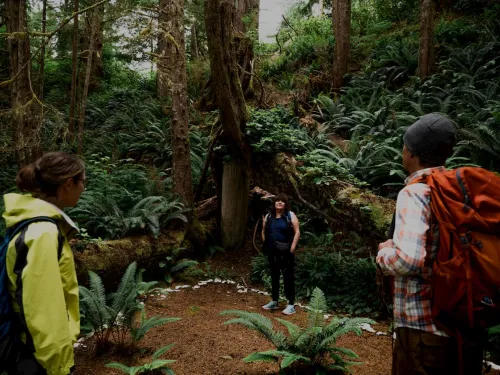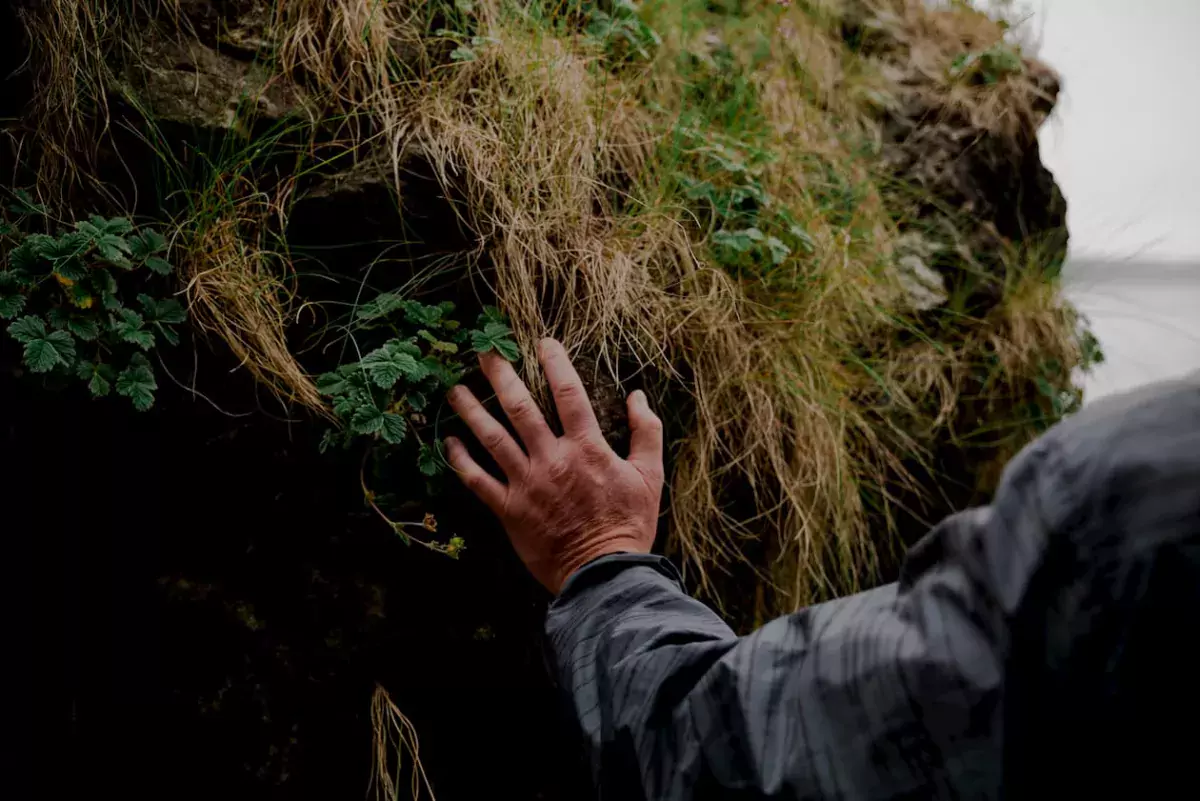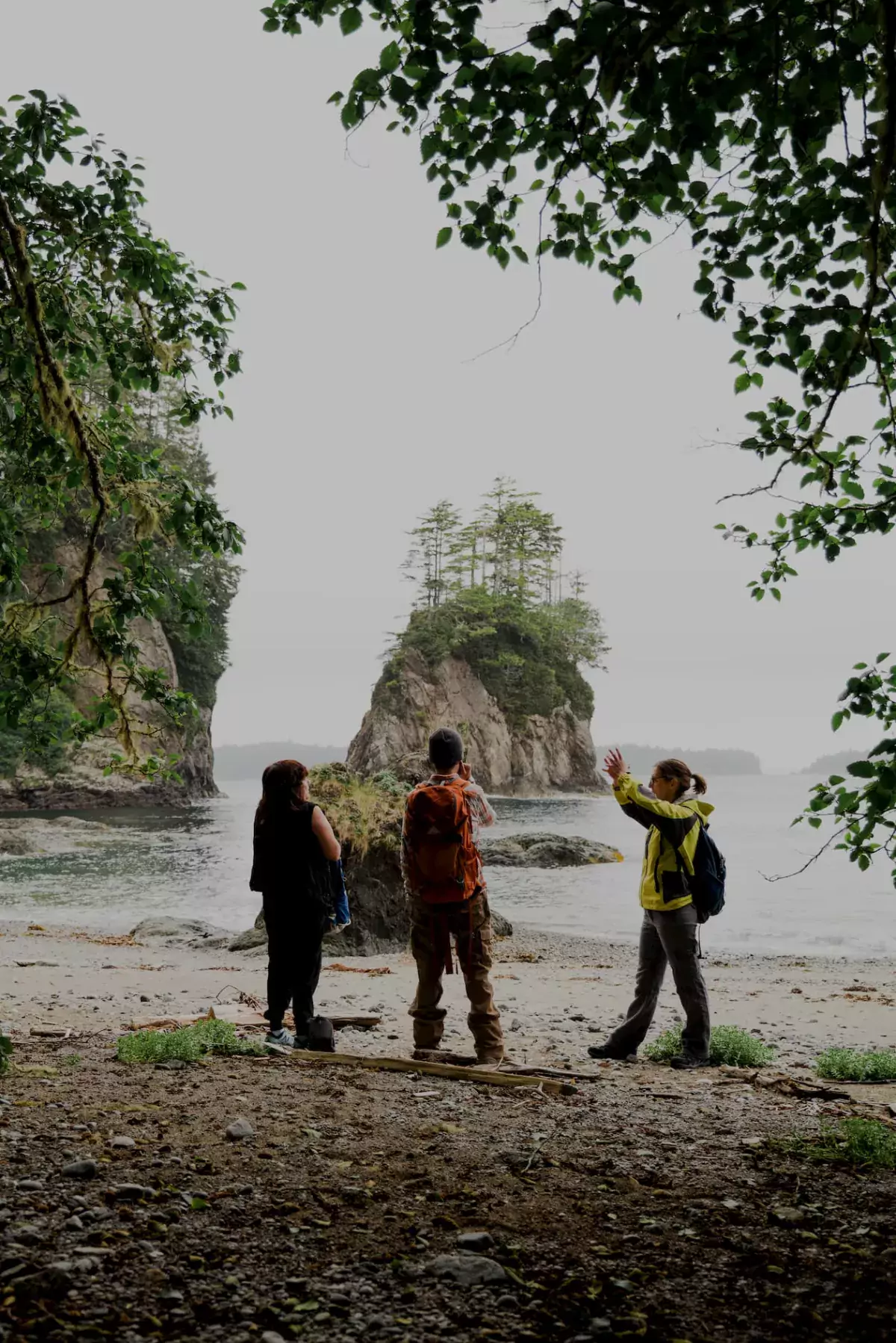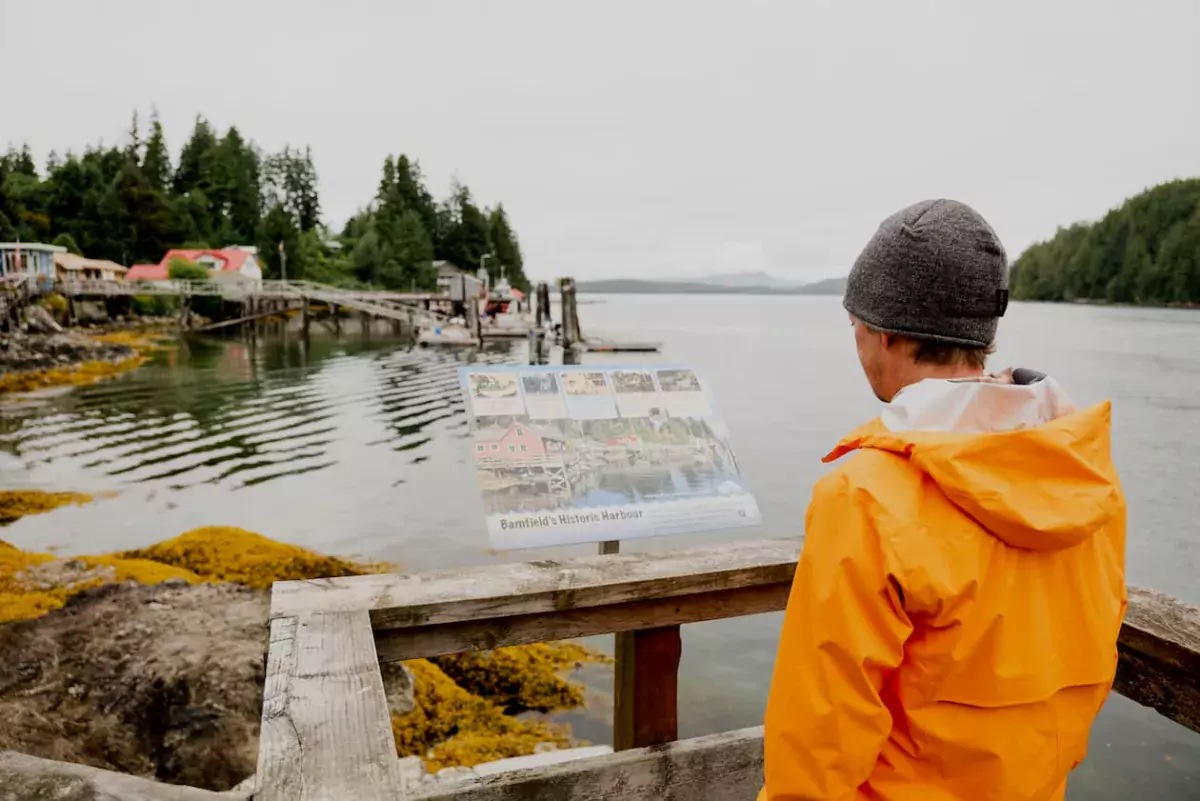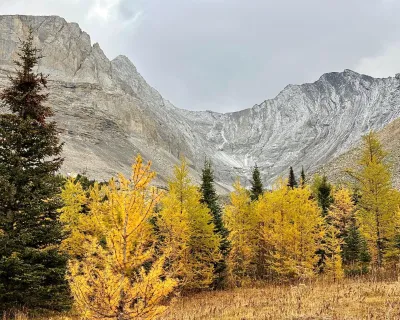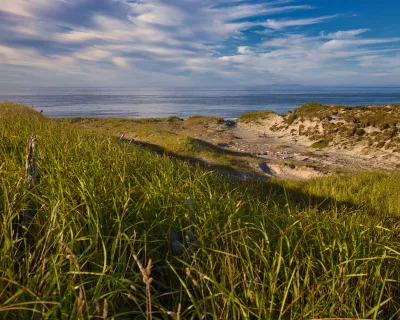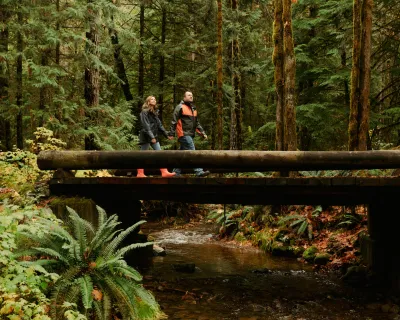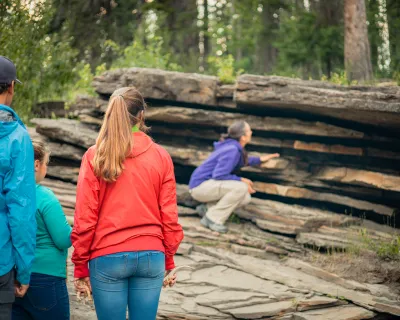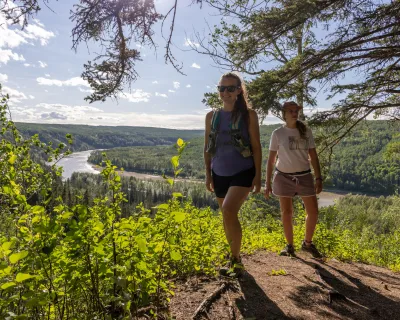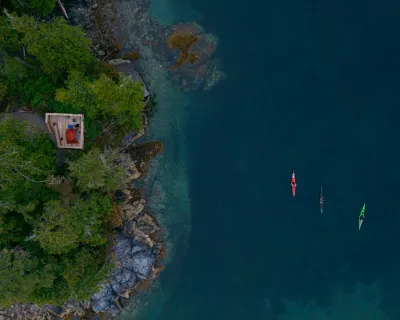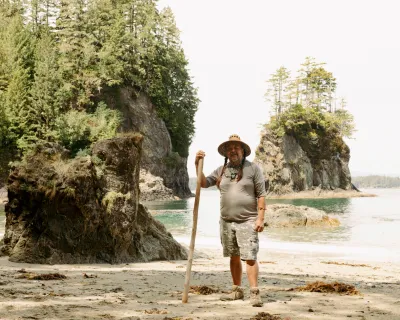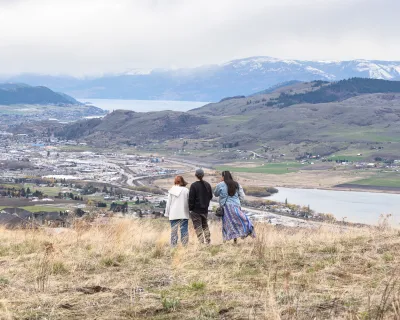Portal to the past at Kiixin: ‘We’re here to tell our story’
By Jaiden George, for #IndigenousCoastBC
Situated on the southwestern coast of Vancouver Island is the tight-knit community of Bamfield, home to the Huu-ay-aht First Nations, and access point to the ancient Kiixin Village – the only known traditional village site on the coast of southern B.C. to still contain standing structures.
A place of immense cultural and historical importance, the Huu-ay-aht people offer guided tours to the site – a unique opportunity for visitors to be welcomed into an ancient and sacred space, to learn about the past, present and future of its original inhabitants. We meet our guide, Stella Peters, on a foggy Monday evening. “For us, we’re able to tell our story,” she says. “We get people coming into First Nations communities whether they’re there for two weeks, a month, or longer, but it’s their story. They’re telling the story from the outside looking in, where our story is from the inside looking out. It’s a different perspective.”
#Kiixin awaits to take you back many millennia
Our Kiixin tour begins in the verdant, serene old growth forest – an abundance of moss, lichen, and salal stretching out in every direction, undisturbed save for the boardwalk and low-impact trail that carefully weave their way through the trees. Unlike much of southern B.C.’s forests, which show extensive scarring as a result of deforestation, the old growth here remains intact, and tranquil – culminating in a space very much reflective of traditional indigenous forestry practices: take only what you need and leave the place better than you found it.
As we climb over roots and duck under trees, Stella commentates, pointing out parts of the forest we wouldn’t know about if not for her knowledge.
“I think it’s great that she knows the natural history of what’s happened in the area – she shows you all the little things that most people wouldn’t even notice without her being there,” says Justin Demo, one of the others on the tour. One such detail, overlooked by many, are culturally modified trees, such as the bark used in the making of houses - many of which we pass on the tour.
The Huu-ay-aht people have had a presence at Kiixin for thousands of years and are passionate about telling their story. Photo by Jaiden George
By now, the sound of the ocean is powerful, roaring. “Kiixin,” Stella explains, “translating roughly to ‘the waves that roll up and down.’ You can hear the gravel rolling on the beach.”
As we emerge from the forest, it’s abundantly clear why the site was selected for the village – the bay is well protected, Kiixin fortress (a large rock formation on the southern end of the beach) functions perfectly as a lookout, and of course, the scenery itself is breathtaking. A short jaunt back into the forest – a wisp of trees and ferns serving as a windscreen – rests the most prominent standing structure: the Archway. “Well, the archway is actually the place where my family comes from,” Stella says, “We have 11 generations of genealogy in that place.”
Salal sprouts from the top, and the centre beam is covered in a dense layer of moss. Neither detract from the powerful aura of the Archway. Instead, the intermingling of the structure and the plant life is reflective of the reciprocal relationship between Huu-ay-aht people and the land that they inhabit. The design, originally asymmetrical, with one beam longer and one shorter, was intentionally built to mimic the big dipper, and faces north, just like the constellation.
Just as the Archway has stood the test of time – a testament to the ingenuity of its designers – the Huu-ay-aht people too remain, both sharing a profound interrelationship to the land on which they stand.
Through the tour, the Huu-ay-aht bring their histories and teachings into the present, and in this time of learning – undoubtedly a time in need of reciprocal efforts, the Kiixin tour is a step towards learning from each other to move forward in a generative way.
“Everything that we’ve been through as a people has made us stronger.” Stella tells me, as we break on the beach. “We’re not going anywhere, and we’re here to tell our story.”
Jaiden George is a photographer, writer and filmmaker from Tofino, B.C. A future Hereditary Chief, his work primarily concerns the conservation of Indigenous land and culture, examining contested spaces, human presence and environmental crisis in the Pacific Northwest - extending also to race relations in photographic representation and alternative methods of environmental activism in visual culture. He is currently in his third year at Emily Carr University of Art and Design in Vancouver, B.C. Follow Jaiden on Instagram.
Be sure to check out the businesses and history of Bamfield before you head out on the Kiixin Tour. Photo by Jaiden George
When You Go
- Want to hike to Kiixin? Learn more here.
- Although Kiixin tours is virtual for 2020, Bamfield has started a slow careful reopening. Please adhere to health authority guidelines understanding you are travelling within sensitive First Nations territory.
- Looking to get the most out of your trip to Kiixin? Check out our one-day itinerary.
- Start exploring your west coast BC options with Destination BC
- Kiixin is only 15 minutes from the community of Bamfield, home to hotels, restaurants and some serious west coast charm.
- Choose to support Huu-ay-aht by choosing to support one of their businesses while traveling. Start your planning here.
Like Our Facebook Page
